Business
Booster Juice Partners with Canadian Developer to Create Video Games Exclusively Available at The Fit & Fun Zone in Toronto Pearson International Airport
Booster Juice Partners with Canadian Developer to Create Video Games Exclusively Available at The Fit & Fun Zone in Toronto Pearson International Airport
Raoul Bhatt CEO | Bhatt.ca (Left) Dale Wishewan CEO | BoosterJuice.ca
EDMONTON, Alberta – Dale Wishewan, President and CEO of Booster Juice, announced the launch of Booster Juice Game Studios at the Fit & Fun Zone Grand Opening in Toronto. He confirmed the newly formed studio will feature several new and highly anticipated games, consisting of mind challenges, 2D retro games and an interactive Microsoft Kinetic body motion detection games, developed by Bhatt.ca Game Studio. These titles will be made available exclusively at Toronto Pearson International Airport in the Booster Juice Fit & Fun Zone, which opened in October 2016.
This Grand Opening event launched a new store concept for Booster Juice, who transformed a passenger waiting area into a vibrant and interactive destination for commuters. The Fit & Fun Zone was designed to embrace the Booster Juice lifestyle; offering nutritious and delicious smoothies, freshly squeezes juices, grilled food and grab n’ go items, in addition to a dynamic concept that extends beyond the store to feature interactive large format games. The games were created to offer travelers the opportunity to stay active while on the go.
“We are truly excited about the Grand Opening of our fourth location at the Pearson Airport” said Dale Wishewan. “Our team is dedicated to pushing the envelope when it comes to store design, so working with the GTAA on the concept and Raoul Bhatt on the launch of Booster Juice Game Studios has been fantastic. These games can be enjoyed by individuals of all ages and skill levels, so we hope people enjoy them as much as we do.”
Bhatt.ca Game Studio CEO, Raoul Bhatt, commented “Millions of customers have come to expect the best in innovation and compelling content from Booster Juice, and Bhatt.ca Studios is proud to partner on these phenomenal titles. Partnering with Booster Juice creates a complementary blend of talents, a massive audience base and a shared passion to create something incredible for their customers and beyond.”
Game Descriptions
The motion game immerses players in an intense and cinematic world, enabling players to use their body for the hyper-realistic, dynamic and interactive environments. Booster Juice Surf places the “cool” you in board shorts riding a branded surf board in the centre of a giant wave. Points accumulate as you avoid dolphins and buoys while trying to keep your balance.
Juice Bar Jumper is a 2D running style game and closely resembles the recognizable Booster Juice stores. With incredibly cute illustrations and a suspenseful storyline, a strawberry speedily whisks across counter tops, earning extra points upon collecting yummy blueberries. As time passes, the difficulty increases.
In another 2D game, the same superstar character—a strawberry with a dashing smile—rides a Booster Juice cup like a rocket, fruits firing out instead flames. He flies through the skies avoiding evil candy, collecting tasty fruit and racking up the points.
The third game unravels a darker, more riveting plot involving the destiny of the strawberry. This is a uniquely-styled, intense game, with challenges above and below, where the player has to double tap to slip in between terrifying blenders. In these vibrantly drawn worlds, players must use a variety of skills to survive and gain points.
Additional games were also designed to challenge your mind. These puzzles are formulated to make you think as you match fruit and test your reflexes. Certainly the game play experience is enhanced while sipping one of Booster Juice’s delicious smoothies.
(Left to Right: Giovanna Verilli | Associate Director for retail Food and Beverage GTAA, Scott Collier VP Customer and Terminal Services, Raoul Bhatt CEO Bhatt.ca Inc, Dale Wishewan CEO Booster Juice, Suzanne Merell Senior Manager Food and Beverage GTAA)
About Booster Juice
The first Booster Juice was opened in Sherwood Park, Alberta in November 1999 by Dale Wishewan, Booster Juice President & CEO, a guy who thought it would be a good idea to sell smoothies in the middle of a Canadian winter. Turns out, taste trumps temperature, and 17 years later there are over 300 locations worldwide. Booster Juice serves its intensely loyal customers a delicious, convenient and healthy alternative to fast food. In addition to their signature smoothies, their menu offers fresh-squeezed juices, grilled food, and snacks. A vibrant brand that attracts an active clientele, Booster Juice has earned multiple awards for the concepts unique offerings and store design.
About Bhatt.ca
Raoul Bhatt has combined his design and coding skills to become the current CEO of his company, Bhatt.ca. His company has created a winning formula allowing him to win contracts with companies like Twitter, Yahoo, Bosch, Edmonton Oilers, Edmonton Eskimos, Calgary Flames, Wrestlemania, Northlands Park, Carlton University, Edmonton Police Service (plus Alberta’s 14 other police agencies), among others. One of Bhatt.ca’s software, FireText, was used during the live event surrounding President Obama’s inauguration. They specialize in video games, desktop software and web and mobile app development.
For further information, please contact:
Booster Juice
Karen Enticknap, National Marketing Lead
Phone: 780 293 3064
Email: [email protected]
Bhatt
Raoul Bhatt
Phone: 780 498 3779
Email: [email protected]
Business
Rhetoric—not evidence—continues to dominate climate debate and policy

From the Fraser Institute
Myths, fallacies and ideological rhetoric continue to dominate the climate policy discussion, leading to costly and ineffective government policies,
according to a new study published today by the Fraser Institute, an independent, nonpartisan Canadian public policy think-tank.
“When considering climate policies, it’s important to understand what the science and analysis actually show instead of what the climate alarmists believe to be true,” said Kenneth P. Green, Fraser Institute senior fellow and author of Four Climate Fallacies.
The study dispels several myths about climate change and popular—but ineffective—emission reduction policies, specifically:
• Capitalism causes climate change: In fact, according to several environment/climate indices and the Fraser Institute’s annual Economic Freedom of the World Index, the more economically free a country is, the more effective it is at protecting its environment and combatting climate change.
• Even small-emitting countries can do their part to fight climate change: Even if Canada reduced its greenhouse gas emissions to zero, there would be
little to no measurable impact in global emissions, and it distracts people from the main drivers of emissions, which are China, India and the developing
world.
• Vehicle electrification will reduce climate risk and clean the air: Research has shown that while EVs can reduce GHG emissions when powered with
low-GHG energy, they often are not, and further, have offsetting environmental harms, reducing net environmental/climate benefits.
• Carbon capture and storage is a viable strategy to combat climate change: While effective at a small scale, the benefits of carbon capture and
storage to reduce global greenhouse gas emissions on a massive scale are limited and questionable.
“Citizens and their governments around the world need to be guided by scientific evidence when it comes to what climate policies make the most sense,” Green said.
“Unfortunately, the climate policy debate is too often dominated by myths, fallacies and false claims by activists and alarmists, with costly and ineffective results.”

Kenneth P. Green
Senior Fellow, Fraser Institute
Business
Canada’s economic pain could be a blessing in disguise

This article supplied by Troy Media.
 By Roslyn Kunin
By Roslyn Kunin
Tariffs, inflation, and falling incomes sound bad, but what if they’re forcing us to finally fix what’s broken?
Canada is facing serious economic headwinds—from falling incomes to rising inflation and U.S. trade hostility—but within this turmoil lies an opportunity. If we respond wisely, this crisis could become a turning point, forcing long-overdue reforms and helping us build a stronger, more independent economy.
Rather than reacting out of frustration, we can use these challenges to reassess what’s holding us back and move forward with practical solutions. From
trade policy to labour shortages and energy development, there are encouraging shifts already underway if we stay focused.
A key principle when under pressure is not to make things worse for ourselves. U.S. tariffs on Canadian steel and aluminum, and the chaotic renegotiation of NAFTA/CUSMA, certainly hurt our trade-dependent economy. But retaliatory tariffs don’t work in our favour. Canadian imports make
up a tiny fraction of the U.S. economy, so countermeasures barely register there, while Canadian consumers end up paying more. The federal government’s own countertariffs on items like orange juice and whisky raised costs here without changing American policy.
Fortunately, more Canadians are starting to realize this. Some provinces have reversed bans on U.S. goods. Saskatchewan, for example, recently lifted
restrictions on American alcohol. These decisions reflect a growing recognition that retaliating out of pride often means punishing ourselves.
More constructively, Canada is finally doing what should have happened long ago: diversifying trade. We’ve put too many economic eggs in one
basket, relying on an unpredictable U.S. market. Now, governments and businesses are looking for buyers elsewhere, an essential step toward greater stability.
At the same time, we’re starting to confront domestic barriers that have held us back. For years, it’s been easier for Canadian businesses to trade with the U.S. than to ship goods across provincial borders. These outdated restrictions—whether on wine, trucks or energy—have fractured our internal market. Now, federal and provincial governments are finally taking steps to create a unified national economy.
Labour shortages are another constraint limiting growth. Many Canadian businesses can’t find the skilled workers they need. But here, too, global shifts
are opening doors. The U.S.’s harsh immigration and research policies are pushing talent elsewhere, and Canada is emerging as the preferred alternative.
Scientists, engineers and graduate students, especially in tech and clean energy, are increasingly choosing Canada over the U.S. due to visa uncertainty and political instability. Our universities are already benefiting. If we continue to welcome international students and skilled professionals, we’ll gain a long-term advantage.
Just as global talent is rethinking where to invest their future, Canada has a chance to reassert leadership in one of its foundational industries: energy.
The federal government is now adopting a more balanced climate policy, shifting away from blanket opposition to carbon-based energy and focusing instead on practical innovation. Technologies such as carbon capture and storage are reducing emissions and helping clean up so-called dirty oil. These cleaner energy products are in demand globally.
To seize that opportunity, we need infrastructure: pipelines, refining capacity and delivery systems to get Canadian energy to world markets and across our own country. Projects like the Trans Mountain pipeline expansion, along with east-west grid connections and expanded refining, are critical to reducing dependence on U.S. imports and unlocking Canada’s full potential.
Perhaps the most crucial silver lining of all is a renewed awareness of the value of this country. As we approach July 1, more Canadians are recognizing how fortunate we are. Watching the fragility of democracy in the U.S., and confronting the uncomfortable idea of being reduced to a 51st state, has reminded us that Canada matters. Not just to us, but to the world.
Dr. Roslyn Kunin is a respected Canadian economist known for her extensive work in economic forecasting, public policy, and labour market analysis. She has held various prominent roles, including serving as the regional director for the federal government’s Department of Employment and Immigration in British Columbia and Yukon and as an adjunct professor at the University of British Columbia. Dr. Kunin is also recognized for her contributions to economic development, particularly in Western Canada.
Troy Media empowers Canadian community news outlets by providing independent, insightful analysis and commentary. Our mission is to support local media in helping Canadians stay informed and engaged by delivering reliable content that strengthens community connections and deepens understanding across the country.
-
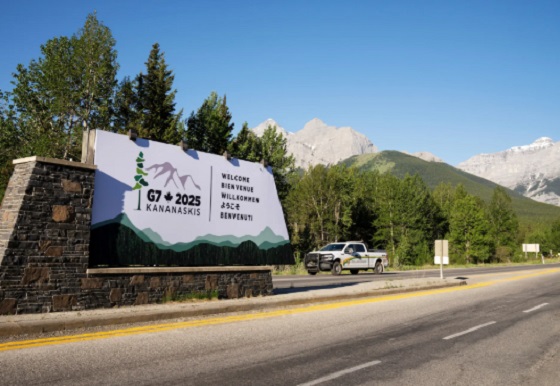
 Energy2 days ago
Energy2 days agoKananaskis G7 meeting the right setting for U.S. and Canada to reassert energy ties
-
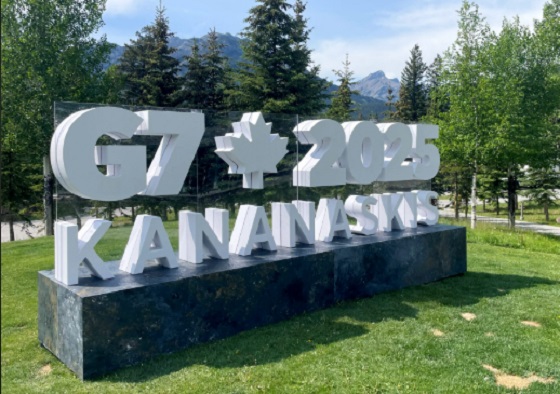
 Business2 days ago
Business2 days agoCarney’s Honeymoon Phase Enters a ‘Make-or-Break’ Week
-

 Aristotle Foundation2 days ago
Aristotle Foundation2 days agoThe Canadian Medical Association’s inexplicable stance on pediatric gender medicine
-
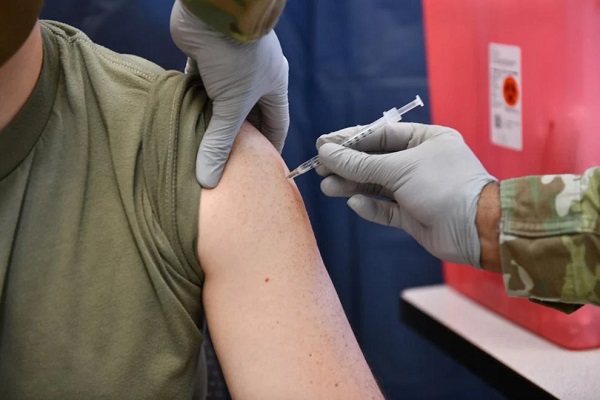
 Alberta2 days ago
Alberta2 days agoAlberta announces citizens will have to pay for their COVID shots
-
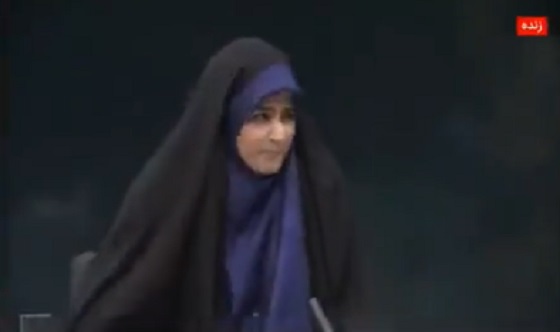
 conflict2 days ago
conflict2 days agoIsrael bombs Iranian state TV while live on air
-
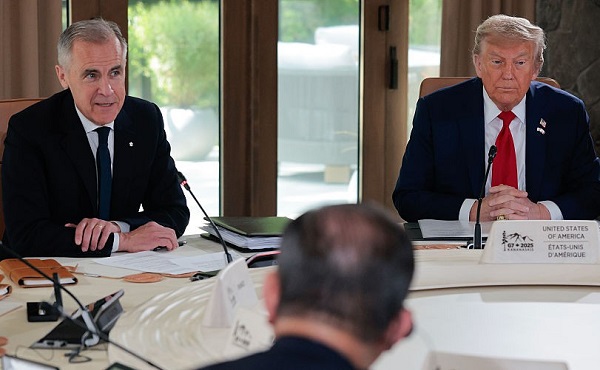
 Business2 days ago
Business2 days agoCarney praises Trump’s world ‘leadership’ at G7 meeting in Canada
-
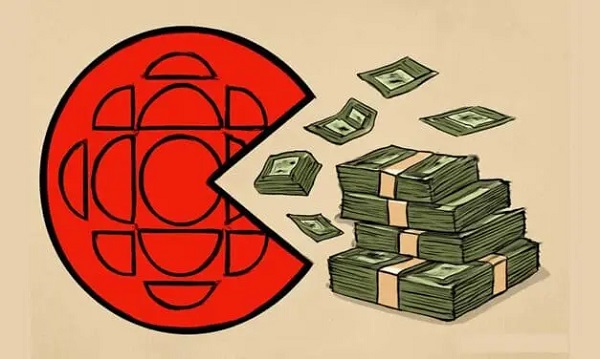
 Business23 hours ago
Business23 hours agoThe CBC is a government-funded giant no one watches
-

 conflict23 hours ago
conflict23 hours agoMiddle East clash sends oil prices soaring










